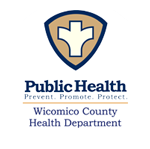Natural Disasters
Hurricanes
Hurricanes are severe tropical storms that form in the southern Atlantic Ocean, Caribbean Sea, Gulf of Mexico and in the eastern Pacific Ocean. Scientists can now predict hurricanes, but people who live in coastal communities should plan what they will do if they are told to evacuate.
Floods
Flooding is the nation’s most common natural disaster. Flooding can happen in every U.S. state and territory. However, all floods are not alike. Some can develop slowly during an extended period of rain, or in a warming trend following a heavy snow. Others, such as flash floods, can occur quickly, even without any visible signs of rain. It’s important to be prepared for flooding no matter where you live, but particularly if you are in a low-lying area, near water or downstream from a dam. Even a very small stream or dry creek bed can overflow and create flooding.
Tornadoes
Tornadoes are nature’s most violent storms. They can appear suddenly without warning and can be invisible until dust and debris are picked up or a funnel cloud appears. Planning and practicing specifically how and where you take shelter is a matter of survival. Be prepared to act quickly. Keep in mind that while tornadoes are more common in the Midwest, Southeast and Southwest, they can occur in any state and at any time of the year, making advance preparation vitally important.
Tsunamis
Tsunamis, also known as seismic sea waves, are most common along the Pacific coast, but can strike anywhere along the U.S. coastline. Tsunamis are enormous waves caused by an underground disturbance such as an earthquake. They can move hundreds of miles per hour, and hit land with waves topping 100 feet in height.

